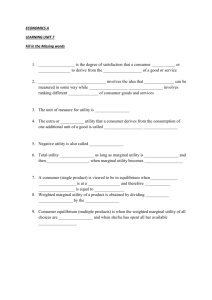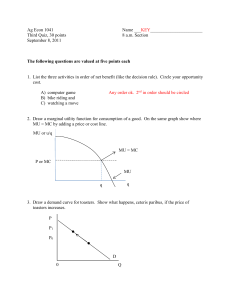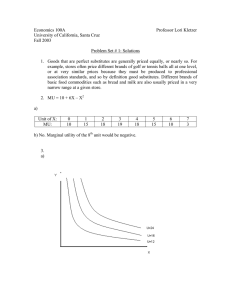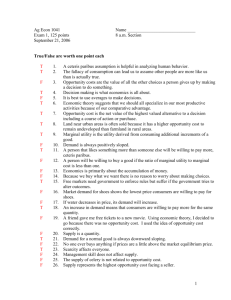Advanced Macroeconomics Problem Set 1 - Hall's Hypothesis
advertisement
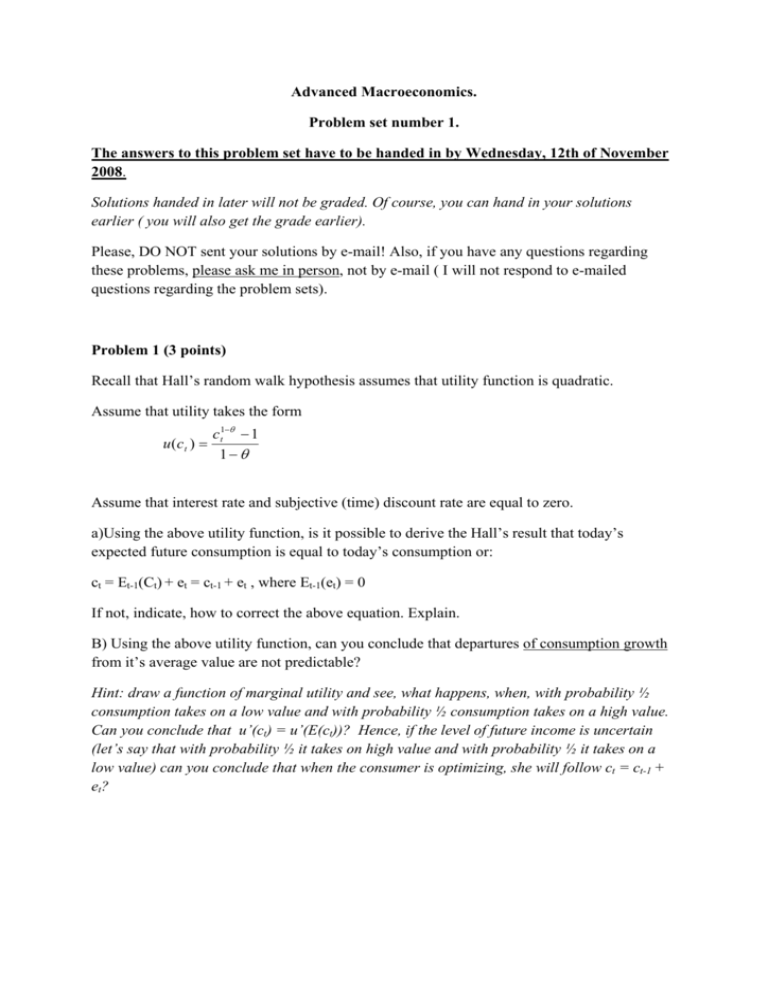
Advanced Macroeconomics. Problem set number 1. The answers to this problem set have to be handed in by Wednesday, 12th of November 2008. Solutions handed in later will not be graded. Of course, you can hand in your solutions earlier ( you will also get the grade earlier). Please, DO NOT sent your solutions by e-mail! Also, if you have any questions regarding these problems, please ask me in person, not by e-mail ( I will not respond to e-mailed questions regarding the problem sets). Problem 1 (3 points) Recall that Hall’s random walk hypothesis assumes that utility function is quadratic. Assume that utility takes the form u(ct ) = c t1−θ − 1 1−θ Assume that interest rate and subjective (time) discount rate are equal to zero. a)Using the above utility function, is it possible to derive the Hall’s result that today’s expected future consumption is equal to today’s consumption or: ct = Et-1(Ct) + et = ct-1 + et , where Et-1(et) = 0 If not, indicate, how to correct the above equation. Explain. B) Using the above utility function, can you conclude that departures of consumption growth from it’s average value are not predictable? Hint: draw a function of marginal utility and see, what happens, when, with probability ½ consumption takes on a low value and with probability ½ consumption takes on a high value. Can you conclude that u’(ct) = u’(E(ct))? Hence, if the level of future income is uncertain (let’s say that with probability ½ it takes on high value and with probability ½ it takes on a low value) can you conclude that when the consumer is optimizing, she will follow ct = ct-1 + e t? Problem 2 (4 points) Refer to the i„q” model of investment with costly investment. Assume that the production function is y=Akα , where α=1/2, price of capital goods Pk = 1 and total costs of investing have the following form: I2 2K θ= a) Derive the first order conditions. b) Draw the phase diagram. c) Using the phase diagram (show the relevant changes on the graph), discuss what will happen with investments and optimal capital stock, if unexpectedly: • Pk = 4 • The level of technology A goes up • Interest rate goes down • Government imposes taxation on marginal product of capital (hence, the revenue of the owner of capital is now (1-t)MPK, where MPK is the marginal product of capital) Problem 3. (3 points) Study the paper by Campbell and Mankiw (1987) „Permanent Income, Current Income and Consumption” NBER Working Paper, 2436. Very shortly (2 pages maximum) describe their methodology, main econometric problems and main results.





